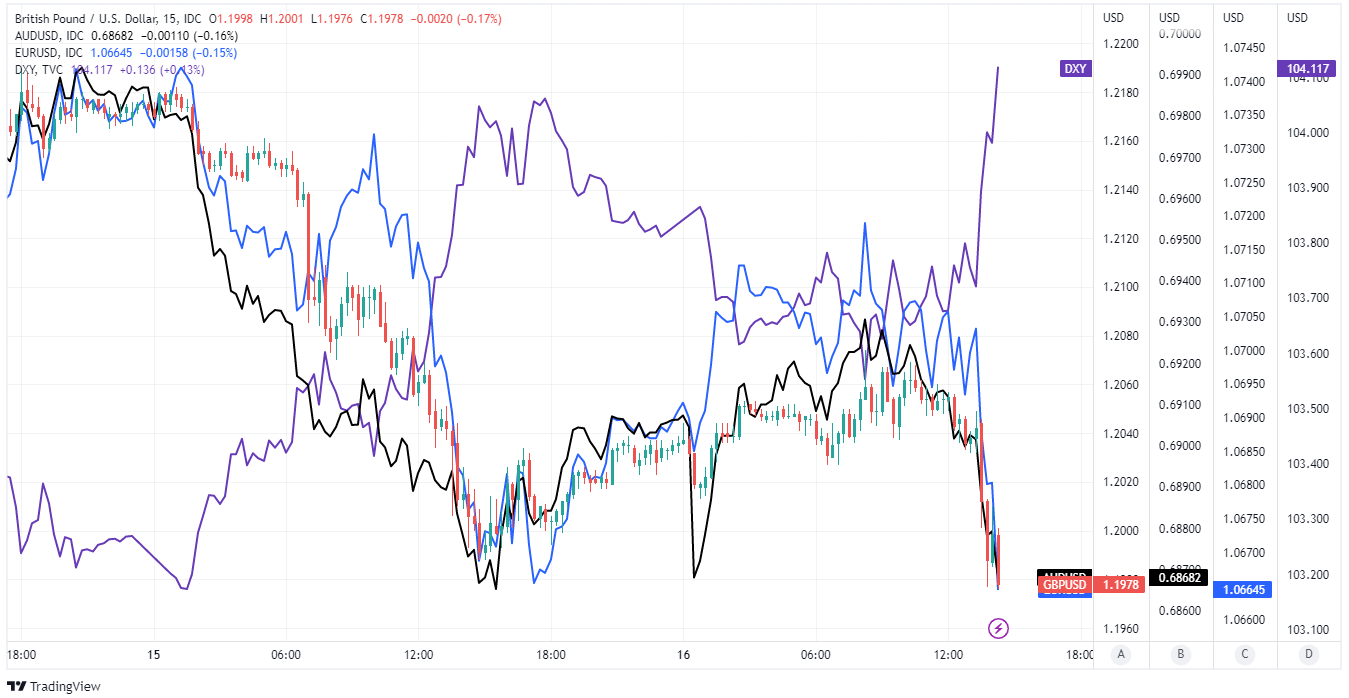GBP/USD Rate Tumbles as Producer Prices Warn of U.S. Inflation Risk
- Written by: James Skinner
-
"The data are noisy, and the downshift will not be smooth each month" - Pantheon Macroeconomics.

The Pound to Dollar exchange rate tumbled below 1.20 in the penultimate session of the week after rising producer prices reminded of ongoing inflation risk in the U.S. and the number of new housing developments starting fell back to its lowest since the 2020 'lockdown.'
Dollars were bought widely at the expense of Sterling and other currencies after the Bureau of Labor Statistics figures suggested that inflation pressures began to build again within corporate supply chains during January and as Census Bureau data warned of a deepening downturn in home construction.
"In January, a 1.2-percent rise in prices for final demand goods led the advance in the final demand index. Prices for final demand services also moved higher, increasing 0.4 percent," the BLS says of January's Producer Price Index.
Producer prices climbed 0.7% last month, surpassing a consensus estimate of 0.4% and keeping the annualised change in producer prices elevated at 6% when it had been expected to dip from 6.5% to 5.4% early in the new year.
Meanwhile, the Core Producer Price Index rose 0.5%, also surpassing a 0.3% consensus to keep the annualised figure little changed at 5.4% when the latter had been tipped to fall from 5.5% to 4.9%.

The producer price data comes just days after the official consumer price index inflation rate eased by much less than was expected for the month of January, placing a question mark over how much longer a recently-declared disinflation process can be expected to continue for in the U.S.
Whether or not the disinflation process continues matters greatly when it comes to the Federal Reserve (Fed) interest rate outlook and Thursday's Producer Price Index data is indicative of further inflation pressures working their way through supply chains and into consumer prices.
"The headline PPI was lifted by spikes in electricity, natural gas, and gasoline prices, none of which will be repeated in February, while the core was hit by an array of separate factors," writes Ian Shepherdson, chief economist at Pantheon Macroeconomics, in review of the data.
"The data are noisy, and the downshift will not be smooth each month. Elsewhere, the dip in jobless claims leaves the trend little changed. Claims will rise in the spring, lagging layoff announcements, but for now they remain extremely low," Shepherdson adds.
Separately on Thursday the Census Burea said U.S. housing starts had fallen to 1.31 million in January, down from 1.37 million previously and their lowest level since the June 2020 report covering the prior month and the final leg of the initial coronavirus-induced 'lockdown' in the U.S.
"That included drops in both the single and multi-family segments, and represents the slowest pace of building seen since June 2020," says Katherine Judge, an economist at CIBC Capital Markets.
"Indeed, with mortgage rates climbing again, activity in the single-family market will remain under pressure ahead," she adds in review of the data.
Thursday's figures mean housing starts have now fallen by almost a third since early last year when the Federal Reserve first began to raise its interest rate but with inflation remaining at multiples of the 2% target and the outlook for it uncertain, the risk is of little respite ahead for the housing market.
Meanwhile, the Pound to Dollar rate's probe below the 1.20 level pushed Sterling close to the bottom of the major currency league table on an intraday basis as well as for the week overall.

